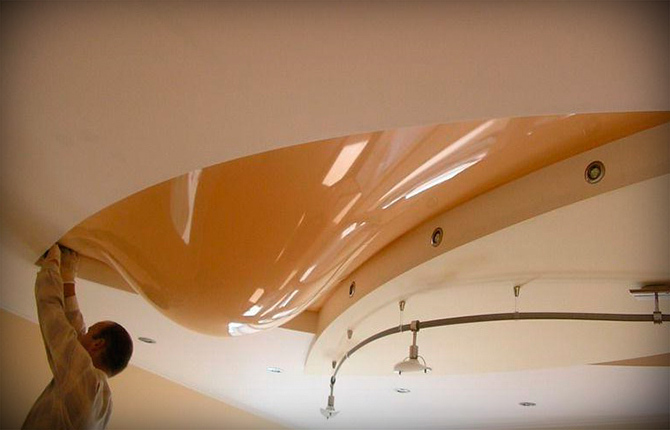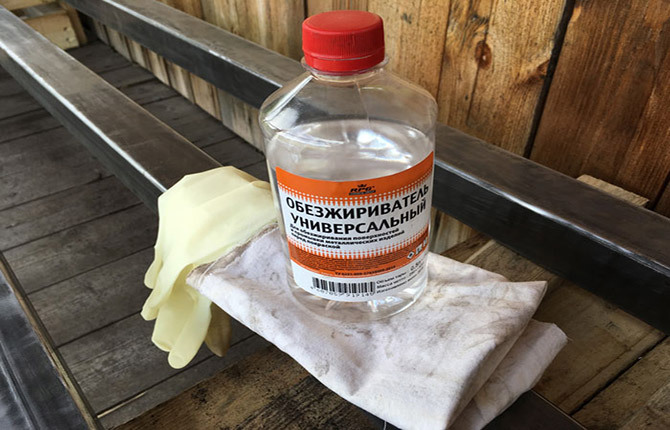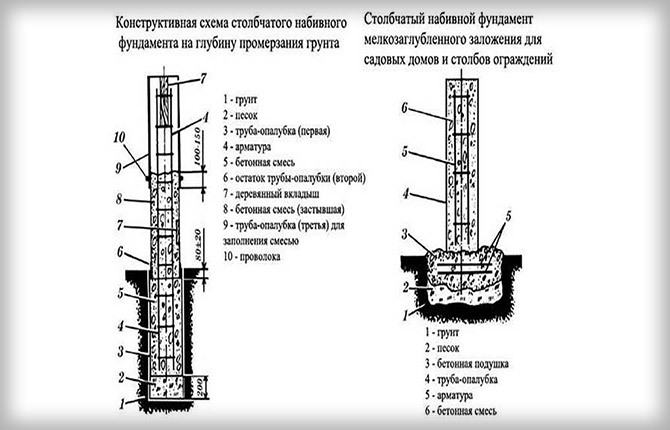Despite the advancement of alternative methods of heating of premises, in the overwhelming number of cases as the primary heat source is a heating fluid circuit. In view of economy and efficiency is optimal in conditions characteristic for our latitude the long winters. The downside is that the water can freeze.
Because it is used in addition still freezing, the coolant for heating, replacing water.
The content of the article:
- The list of requirements to the coolant
- When it is necessary to use antifreeze
- Overview sought coolants
- The most common coolant - water
- Antifreeze alternative - antifreeze
- Application nezamerzayki based on ethylene glycol
- Use of propylene-based fluid
- Glycerol as an effective non-freezing means
- Heat transfer fluid for the electrode boiler
- Recommendations for the choice of means
- How to determine the amount of coolant
- Useful videos on the topic
The list of requirements to the coolant
The main task of the liquid in the tubes - the transfer of thermal energy from the boiler to the radiators. To the heating system was safe and energy-efficient, fluid must meet a number of important requirements, including:
- preservation pipes from corrosion;
- chemical inertness to the installed in the conduit seals;
- appropriate operating parameters of pipes operating temperature range (from freezing to boiling);
- high heat capacity to accumulate as much heat as possible;
- Minimal ability to scale formation;
- complete safety: there is no emission of toxic fumes and the maximum explosion and fire resistance;
- stable chemical composition (liquid should not decompose and change their physical properties at high temperatures).
And now the main question: what kind of antifreeze for modern heating systems meet all the requirements?
The answer may be disappointing, but today, in nature there are no such liquids. Such an ideal chemical composition has not yet been established. Therefore, the issue of selection of the optimal option - a very urgent task today.
















When it is necessary to use antifreeze
Before proceeding to the consideration of alternative liquids should not be discounted water. If the heating system is installed in the house where the tenants live permanently, the water will be one of the safest and most reliable options. She coolant has optimal parameters for the circulation of heating circuits.
However, at the peak of winter frosts, the slightest crystallization water may cause a serious accident with damage to the pipeline and the heating equipment nodes.
When it comes to a country house, which is carried out periodically run over, or when the weekend is often a family leave their abode, leaving the heating without supervision, then the fluid must be resistant to the typical interval for the area of low temperatures.
Only the use of chemical compositions as carrier of thermal energy is necessary to prepare the heating circuits. The system should be completely sealed since Liquid is toxic in varying degrees and flammable.

The owner must keep in mind that freezing liquids need to be replaced periodically, which is fraught with additional costs. Some models of boiler equipment have specific recommendations on the use of coolant certain brand. If you apply the liquid of different composition, we can lose the guarantee on the boiler.
Overview sought coolants
To protect themselves, we examine in detail every kind of coolant.
The most common coolant - water
In 70% of water is used modern systems, including the modified compositions with additives. What explains such popularity:
- complete harmlessness (leakage may cause only domestic difficulties);
- highest heat capacity - about 1kal / g * C (per liter of water is able to transfer more heat than any other liquid);
- cheapness and availability. The water has a minimal cost in comparison with non-freezing compositions. At any point in the water system can be refilled without significant investment of time, labor and money.
However, to carry out the replacement of the water in the heating circuit is not desirable without a reason. When heated, it is freed from salts and oxygen. Overboiled several times in the boiler water does not already have the composition and the amount of salt, which was when it poured into the system. Unlike new portion substantially devoid of free oxygen.

The downside is this:
- The relatively high freezing temperature, so left unattended water heating system can not (otherwise, during freezing and expansion of water may break the pipes and radiators);
- Contained in the salt may provoke deposits on pipes and heating elements that heat and reduces overall system efficiency;
- Water - this oxidant (dissolved oxygen can cause corrosion of metallic heating elements, including radiators).
With the freezing point can not be helped, but other negative properties can be significantly reduced. To start possible to reduce the concentration of salts using softening. Reduce the amount of bicarbonate salts can be by boiling.
sodium phosphate, which can be bought in the store, allowing the water to soften. At the same time we must remember the correct dosage, since excess reagents may adversely affect the thermal properties of water.
Not to be confused with the dosage, you can use distilled water, but it will cost much more expensive. Now you can not worry about that radiators clogged scum. To cheat and save, you can use melted snow or rain water.
She already is distilled in a natural way. But its purity can only be partial. She could be fed with atmospheric pollution, but in any case it will be much softer than the water from boreholes, wells or tap.

Manufacturers offer distilled water enriched with inhibitor additives. They significantly reduce the risk of corrosion. Also surface-active compounds (surfactants) are introduced into a distillate. Their content in the water to minimize the formation of deposits on the inner surfaces of the radiators.
Surfactant makes existing deposits to flake off (with consequent withdrawal from the system through a filter), and also reduces the chemical activity of the water. As a result of all gaskets and seals will last longer.
Antifreeze alternative - antifreeze
Even distilled water with an optimal set of additives is not without major disadvantages - freezing at 0 degrees Celsius. Special fluid for metal radiators devoid of this defect, having moreover a lower crystallization temperature.
Low temperature acts on antifreeze differently than water. Even when exceeding the minimum working values fluid does not crystallize and does not expand, and turns into a gel-like substance. Therefore, the pipes and radiators are protected from deformation and damage.
With increasing temperature, the thickened consistency of the antifreeze liquid is more, increased turnover rates, while in the normal state they are 15% lower than traditional rival - water.

Concentrated non-freezing composition may be diluted according to the manufacturer's instructions, taking into account local climatic conditions. For a liquid with freezing limit of -30 ° half diluted with water to -20 ° portion of antifreeze is mixed with two parts of water.
Most formulations can withstand up to -65 degrees. In most areas of north and middle zone temperature seldom falls below -35, so antifreeze often diluted with distilled water to decrease the threshold to -40.
















Manufacturers of high-quality solutions made part of the most stable, so it is able to last up to 5 years. After that, it will require complete replacement.
To achieve these properties, we had to sacrifice some of the advantages possessed by the water:
- antifreeze heat transfer is 15% lower (sometimes this may entail the need to install additional sections radiators);
- may contain toxic substances therefore can not be used in antifreeze 2-contour systems where the composition can fall in the hot water circuit;
- high compared with the water flow, because of which it is necessary to use specific seals that can prevent leakage;
- increased viscosity, which would require a more powerful pump;
- a higher coefficient of expansion requires the installation of the increased volume of the expansion tank.
If you are using all kinds of anti-freeze can not perform wiring heating galvanized pipes, as in contact with them nezamerzayku loses some of the original useful properties.

The use as coolants freezing liquids makes modify the heating circuit. Due to the slower viscosity antifreeze it transfers heat heating devices, so it is better to increase the number of sections to purchase devices or radiators with greater heat capacity. Still required to reduce friction in the pipes by fittings for replacement analogs over one position size than that used in the water circuits.
Modern antifreeze liquids, depending on the composition can be divided into three main types:
- glycerol;
- on the basis of propylene glycol;
- on the basis of ethylene glycol.
Consider each separately, to choose the most suitable option for the existing equipment and conditions.
Application nezamerzayki based on ethylene glycol
One of the most popular anti-freeze takes its pride of place on the shelves thanks to the most affordable price in mind a simple manufacturing process.
The liquid contains about 4% of additives which do not provide ethylene glycol expandable at high temperatures. Also included are inhibitors that prevent corrosion of metal striking surface. Due to the aggressiveness of ethylene glycol product is used only in diluted form, to protect the inside of the pipes and radiators.

The main drawback is the toxicity of ethylene glycol. The minimum amount of the substance in the human body can cause serious health problems. Therefore, the entire heating system must have the highest degree of sealing. Another flaw is the use of ethylene glycol constant temperature control.
If the boiler will heat the liquid to a temperature close to the boiling point, the composition starts to decompose to deposition of a solid precipitate and recovering the acid that is destructive for all heating equipment.
It said anti-freeze is suitable only for those systems where possible to accurately maintain the temperature, but not all boilers are equipped with this feature.
Use of propylene-based fluid
This is a modern antifreeze, which got rid of some of the shortcomings of ethylene glycol. Benefits:
- non-toxic (as part of the additive is used in the food industry);
- It can be used in the two circuits, as even a casual mix with drinking circuit will not harm human health;
- higher thermal properties;
- operated by 10 years;
- They operate in the heating circuit on the principle of lubrication, which reduces the flow resistance in the conduit and improves system efficiency.
However, one drawback have not managed to eliminate - it is incompatible with zinc. Special additives lose quality during the flow of galvanized pipes. Another relative disadvantage of twice higher price.
Glycerol as an effective non-freezing means
Glycerin antifreeze is equivalent to the water as close to an ideal set of properties, but at the same time criticized. Opinions differ, so it makes sense to announce all the moments. Supporters of the glycerol structure reveals the following advantages:
- environmentally friendly and safe solution;
- wide operating temperature range - -30 + 100;
- It expands during freezing to the minimum;
- Compatibility with galvanized pipes and radiators;
- It is cheaper than propylene;
- the service life of 7-10 years.
Option-based glycerin is not explosive and does not burn. Plus strong that it practically does not destroy the seals.

Among those against the coolant, portrayed in such arguments:
- large mass, which causes additional strain on the tube;
- the absence of quality standards for glycerine mixture;
- overtemperature and evaporating the water loses its properties, turning into a gel-like mass has hardened;
- high foaming;
- at temperatures above 90 degrees may start to decompose;
- a lower heat capacity as compared with propylene glycol;
- due to the increased viscosity promotes more rapid wear of the equipment.
It is worth noting that in some countries where ethylene is prohibited, the production of glycerol and heat transfer does not. In view of the contradictions in the use of glycerin liquid, the responsibility for its use rests entirely on the host.

Heat transfer fluid for the electrode boiler
This type of equipment should be noted separately, as electrode boilers require a special type of coolant. When this liquid is heated by the impact ionization by the AC. Antifreeze must have a certain chemistry that could provide three conditions: the correct values of the electrical resistance, electrical conductivity and ionization.
Manufacturers electrode boilers provide own strict guidelines for the use of specific brands of coolant. Therefore, you need to pick up antifreeze with great care so as not to lose the warranty.

Recommendations for the choice of means
One must consider not only the characteristics of heat transfer to the heating system, but also the configuration of the equipment to make safe and effective heating.
If you decide to stay on the use of anti-freeze, let's look at the conditions in which it is possible to use:
- in the absence of boiler heating temperature regulator;
- using gaskets made from flax oil underwinding treatment;
- circuit used in the heating pipes, radiators, valves with a galvanized surface;
-otopitelnaya system open
Evaporation of water from the antifreeze properties may change, and glycol vapors are toxic.
Compliance with these rules will allow the owners to get rid of a number of troubles when incorrect application of the non-freezing liquids:
- in places of seals must be linen hemp promazyvat sealing paste;
- sectional radiators need to sort out, to replace the seal on the gasket made of Teflon or paronita;
- not to use the automatic air vent (bleed excess air is better to install cranes Majewski for manual adjustment);
- radiators and pipe should have an increased volume and diameter;
- presence of high power circulation pump;
- set diaphragm expansion tank with a larger volume.
Filled with antifreeze into the heating system only after rinsing quality for which better to use special formulations. For security purposes, all tenants, experts recommend the use of propylene glycol. Fill the system, the boiler can not be immediately output to the peak power. Necessary to raise the temperature stepwise. It is necessary to antifreeze scored optimum performance and extended in the normal range.

Upon dilution of the liquid water not be allowed concentration higher than -20 degrees. Excess water will lead to scale deposition and changes working properties glycol. Diluted with distilled water only.
How to determine the amount of coolant
The easiest way - use a water meter or a water meter. This is in almost every home or apartment with centralized water supply. Before starting the measurement the heating circuit must be completely emptied. Then, readings are taken at the counter and begins filling a small system water pressure (to avoid air pockets that distort readings).
As soon as the heating pipe is filled with water, it is necessary once again to take readings of the water meter. It is necessary to remember that 1 cubic meter - a 1000 liter and purchase the appropriate amount of fluid.
The second method is less convenient, but is effective when there is no counter. The completed system is emptied through a volumetric capacity (the tank or bin defined volume). The main thing is not to stray from the number of buckets. Another method - Mathematics. As initial data values are taken volumes radiators and the expansion tank, pipe diameter, the volume of the heat exchanger of the boiler. Using simple geometric and arithmetic formula can calculate the final volume.
Useful videos on the topic
Movie will introduce the expert opinion on whether or not to change the water on a freezing liquids:
These facts reveal the full picture of the information for each host, which is defined with a choice of coolant. He will know what fluid he needs, what conditions are necessary for its use and how to create them.


